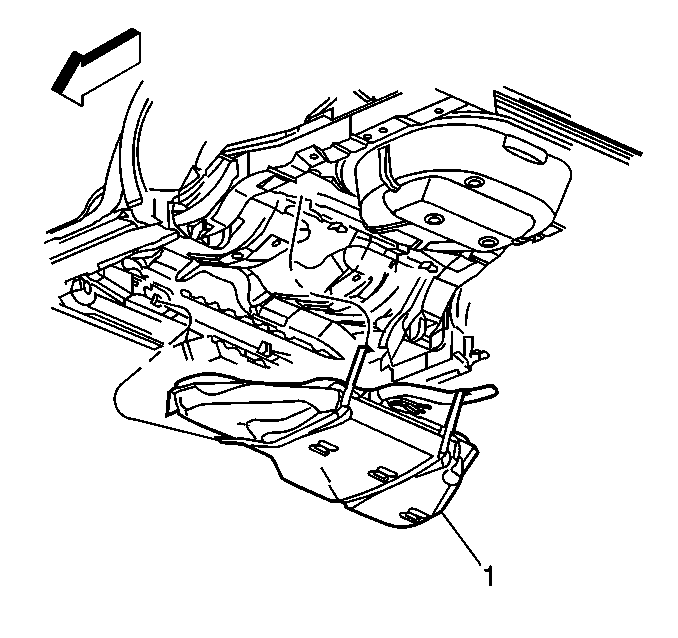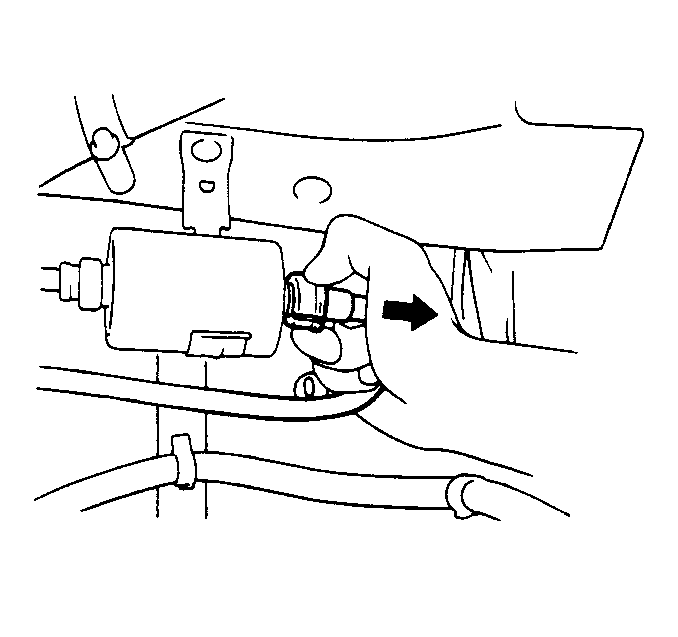
Important: Inspect all connectors for dirt and burrs. Clean or replace components/assemblies
as required. Fuel line O-rings for cuts, nicks, swelling or distortion.
Replace if necessary.
- Reinstall the fuel sender assembly to tank. Refer to
Fuel Sender Assembly Replacement
.
- With the aid of an assistant, raise the fuel tank (1) to body.
- Connect the EVAP line to the fuel sender.
- Connect the fuel tank pressure sensor electrical connector.
- Connect the fuel tank sender electrical connector.
Notice: Use the correct fastener in the correct location. Replacement fasteners
must be the correct part number for that application. Fasteners requiring
replacement or fasteners requiring the use of thread locking compound or sealant
are identified in the service procedure. Do not use paints, lubricants, or
corrosion inhibitors on fasteners or fastener joint surfaces unless specified.
These coatings affect fastener torque and joint clamping force and may damage
the fastener. Use the correct tightening sequence and specifications when
installing fasteners in order to avoid damage to parts and systems.
- Reinstall the fuel
tank retaining straps.
Tighten
Tighten the bolts to 35 N·m (26 lb ft).
- Connect the hoses to filler, vent and vapor pipes
- Reinstall the exhaust rubber hangers.
- Reinstall the muffler support bolts.
Tighten
Tighten the bolt to 15 N·m (11 lb ft).
- Connect the nylon fuel line and fuel filter quick-connect fittings.
Refer to
Steering Knuckle Replacement
.
| • | Apply a few drops of clean engine oil to the male connector tube
ends. |
| • | Push the connectors together to cause the retaining tabs/fingers
to snap into place. |
| • | Once installed, pull on both ends of each connection to make sure
they are secure. |
- Lower the vehicle.
- Refill the tank and reinstall the fuel fill cap.
Caution: Unless directed otherwise, the ignition and start switch must be in the OFF or LOCK position, and all electrical loads must be OFF before servicing
any electrical component. Disconnect the negative battery cable to prevent an electrical spark should a tool or equipment come in contact with an exposed electrical terminal. Failure to follow these precautions may result in personal injury and/or damage to
the vehicle or its components.
- Install
the negative battery cable.
- Inspect for fuel leaks.
| 14.1. | Turn the ignition switch ON for 2 seconds |
| 14.2. | Turn the ignition switch OFF for 10 seconds. |
| 14.3. | Turn the ignition switch ON. |
| 14.4. | Check for fuel leaks. |



